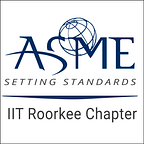Exploring the Benefits and Process of Zinc Casting Technology
Casting technology is a highly efficient process used to produce complex metallic components. Among various casting methods, zinc casting stands out as a popular choice due to its ability to create precise and high-performance parts. In this blog, we will delve into the steps involved in zinc casting, its advantages, and its significance in the automotive industry.
Zinc Casting Process
Zinc alloy die casting is the primary method used for manufacturing robust and long-lasting parts. This process entails melting zinc alloys and injecting them into prepared molds. Here is a breakdown of the zinc casting process:
- Preparation of Die: The die-cast mold is meticulously cleaned to eliminate impurities. Lubrication is applied to facilitate the ejection of the casted part. Finally, the mold is clamped with high pressure.
- Injection: The zinc alloy is melted and poured into the hot chamber of an injection machine. The molten zinc material is then injected into the die-cast mold under high pressure.
- Cooling and Ejection: The molten zinc cools and solidifies within the die-cast mold, taking the desired shape. Once cooled, the mold is unclamped to eject the solid zinc casting. It is crucial to ensure the casting has fully solidified before ejection.
- Trimming: To refine the final product, excess metal resulting from the casting process is removed. Trimming can be achieved using trim dies, saws, or other suitable methods.
Advantages of Zinc Casting
Zinc casting offers several advantages that make it a preferred choice in various industries. Let’s explore its benefits:
- Precision and Strength:
Zinc alloys can be cast with exceptional precision and tight tolerances. This eliminates the need for additional machining operations, reducing production costs. Zinc die castings are known for their superior strength compared to other alloys and processes. - Easy Reshaping:
Zinc’s low melting point allows for easy reshaping or redesigning of parts if necessary. This flexibility enables manufacturers to adapt quickly to design changes or customize components as required. - Complex Geometries:
Zinc alloy die casting is highly suitable for producing intricate and complex parts. The excellent fluidity of zinc allows for the creation of thin-walled components with complex shapes. Additionally, zinc cast parts exhibit a smooth surface finish. - Surface Treatments:
Zinc casting parts can undergo various surface treatments such as grinding, painting, and electro-plating. This versatility enhances the aesthetic appeal and corrosion resistance of the final product. - Longevity of Dies:
Zinc’s low melting temperature minimizes the thermal stress on the die during casting, resulting in longer service life for the molds. - Mechanical Properties: Zinc alloys offer impressive mechanical properties, including high yield strength, elongation, and hardness. These properties ensure the durability and performance of zinc-cast parts.
- Zinc Casting in Automotive Industries:
Zinc casting technology plays a crucial role in the automotive industry. Several automotive components can be efficiently manufactured through zinc die casting, including interior aesthetic parts, engine and under-the-hood components, power steering systems, brake parts, air-conditioning components, fuel systems, complex net-shaped housings, and electronic devices. The use of zinc casting ensures precise dimensions, high strength, and excellent performance in these critical automotive applications. - Recyclability:
Zinc is highly recyclable, contributing to sustainable production practices. Approximately 30% of zinc production comes from recycled or secondary sources. The collected zinc scrap is processed to separate zinc from other materials, which is then used as a raw material to produce zinc metal. The recycling of zinc has been steadily increasing in the industry, reducing waste and conserving resources.
Disadvantages of Zinc Casting
While zinc casting has numerous advantages, there are some limitations to consider:
- Weight: Zinc die castings tend to be heavier compared to non-ferrous alloys, making them unsuitable for lightweight applications.
- Corrosion Resistance:
Zinc’s corrosion resistance can be compromised when mixed with other metals such as tin or lead, reducing its ductility. - Temperature Sensitivity:
Zinc casting components may become fragile if exposed to high temperatures, leading to a decrease in tensile strength. Similarly, low temperatures can impact the impact properties of zinc alloy components.
Conclusion
Zinc casting technology offers a wide range of benefits, including precision, strength, and the ability to produce complex components. Its applications in the automotive industry highlight its importance in manufacturing critical parts. With its recyclability and potential for surface treatments, zinc casting presents an environmentally friendly and cost-effective solution. By understanding the process and advantages of zinc casting, manufacturers can harness its capabilities to create high-quality and durable products.
